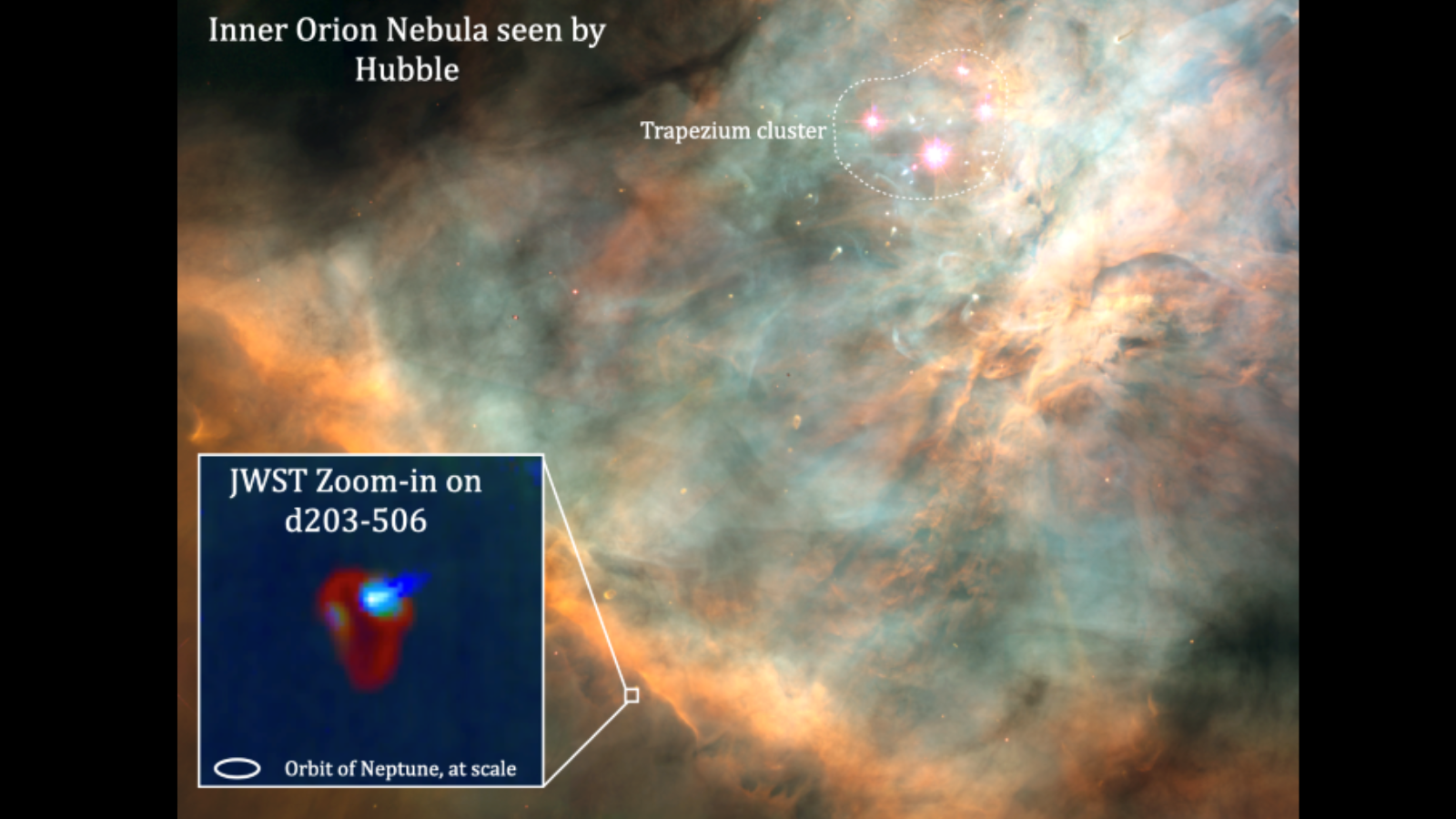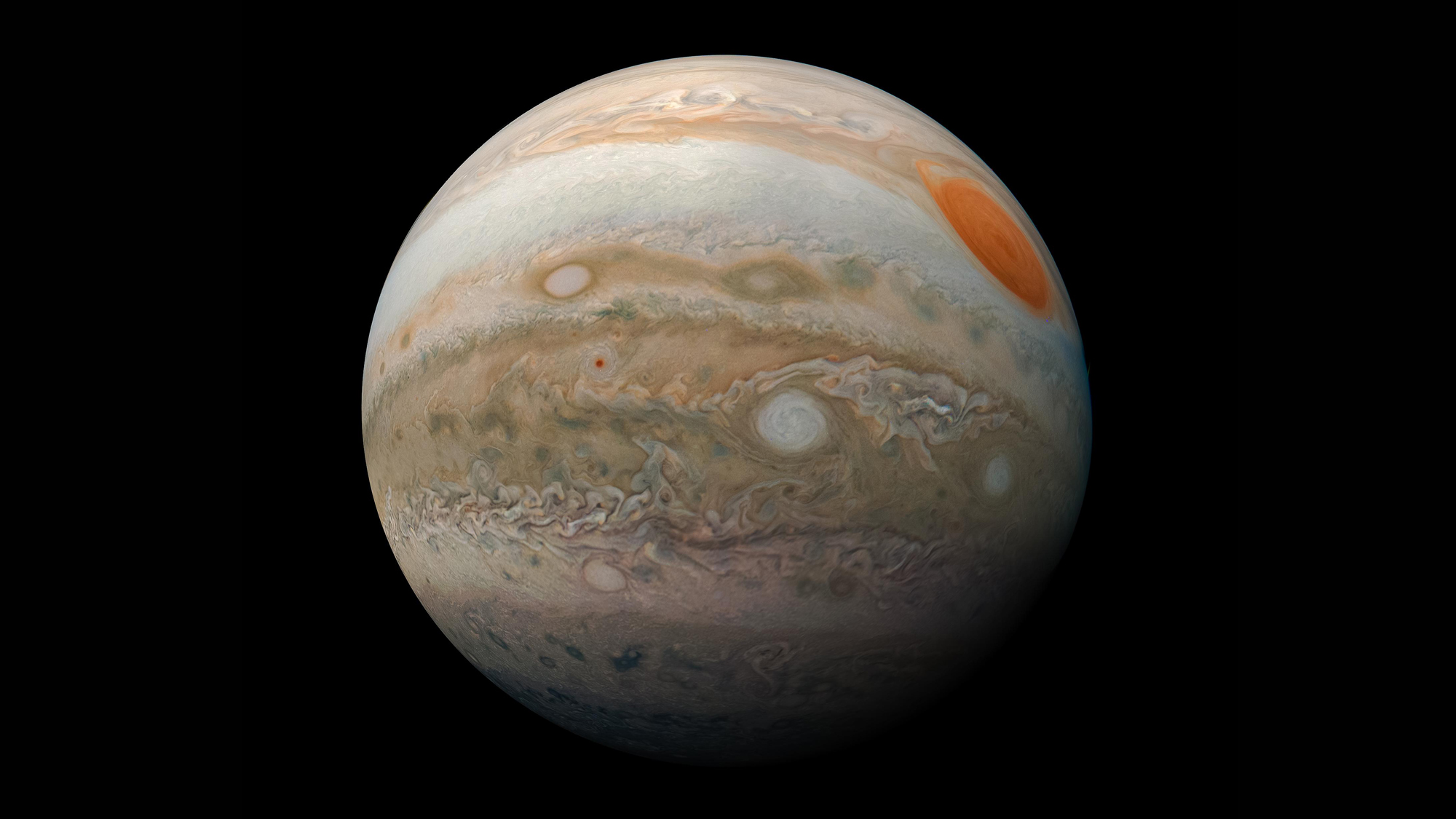James Webb Space Telescope reveals how stellar blasts of radiation stunt planet birth
"We think that the solar system formed in an environment similar to Orion, so observing systems like d203-506 is a way to travel back in the past."

Astronomers have used the James Webb Space Telescope to investigate a stellar nursery packed with infant stars in the Orion Nebula. The investigation has helped to uncover the effect that radiation from massive stars has on planet formation.
The Orion Nebula is a massive complex of gas and dust that forms the building blocks of new stars. In fact, it's the nearest star-forming region to Earth. However, this stellar precursor material can also absorb light, acting as a shield for recently born, post-natal stars. That makes it hard for scientists to see those baby stars from our vantage point on Earth. The light the bodies emanate gets effectively hidden. Fortunately, though, the material is less effective at screening low-energy and long-wavelength light: Infrared light.
What this means is the infrared-sensitive, powerful JWST allows astronomers to peer through the Orion Nebula's clouds, even from about 1,400 light-years away. And, with the team's new research, it has honed in on a disk of material called d203-506. This is a disk currently forming planets. After taking a closer look, the researchers found the so-called protoplanetary disk may be unable to form some planets. They speculate this is due to the actions of other stars.
The protoplanetary disk at hand surrounds a small red dwarf star believed to be less than 1 million years old and have, at most, around 10% of the sun's mass. This means the star is relatively young, and relatively cool. Yet, in addition to being only mildly irradiated by its own central star, d203-506 is also bombarded by harsh, high-energy ultraviolet radiation coming from massive young stars in its surroundings.
"Massive stars that are 10 times the size of the sun are 100,000 times more luminous than the sun, and therefore they cast a strong UV radiation on the disks around nearby sun-like stars," Olivier Berné, team leader and a research scientist at the Institut de Recherche en Astrophysique et Planétologie, told space.com. "This radiation heats up the gas, which then escapes from the disk from which planets are expected to form, a process which we call 'photoevaporation.' Therefore, their action can suppress the formation of planets."
Some stars find it harder to shed mass
A main outcome of the team's research was the discovery that whatever planetary system emerges from disk d203-506 will lack an analog for our solar system's largest world, Jupiter.
Breaking space news, the latest updates on rocket launches, skywatching events and more!
This is because the intense blasting of UV radiation is likely to suppress the formation of such a gas giant.
"Thanks to observations in the infrared with JWST, we were able to make a measurement of the rate at which the gas escapes," Berné said. "We found that, in d203-506, the disk loses about one Earth mass per year. That is a lot of mass loss!"
This investigation was necessary because, somewhat ironically, massive stars bombarding protoplanetary disks with radiation doesn't always act to suppress planet formation. "We think the solar system formed in an environment similar to Orion, so observing systems like d203-506 is a way to travel back in the past," Berné said.
That, however, raises the question of why the solar system was able to form Jupiter when d203-506 cannot.
"An important parameter is the mass of the star around which planets may form," Berné said. "The star of d203-506 is five to 10 times less massive than the sun. Therefore, it has a weak gravitational field, which means its disk cannot resist photoevaporation well. A star like the sun has a larger gravitational field, so it would be able to better resist photoevaporation."
The protoplanetary disk d203-506 first came to the attention of the team behind this discovery after it was observed with the Hubble Space Telescope and the Atacama Large Millimeter/submillimeter Array (ALMA) in Northern Chile.
"It was a bit serendipitous. This object was seen with Hubble, but it was very faint. In some previous observations with ALMA, however, we saw it was quite bright, so we zoomed in with ALMA. Our ALMA data was also very nice, so we thought we should observe it with JWST," Berné said. "The JWST delivered many surprises, one of the greatest was how rich the spectra we obtained were.
"There is an incredible amount of information in the data; it has already been a year since we obtained it, but we probably used only 10% of the useful information."
The team's research will be published in the March 1 edition of the journal Science.

Robert Lea is a science journalist in the U.K. whose articles have been published in Physics World, New Scientist, Astronomy Magazine, All About Space, Newsweek and ZME Science. He also writes about science communication for Elsevier and the European Journal of Physics. Rob holds a bachelor of science degree in physics and astronomy from the U.K.’s Open University. Follow him on Twitter @sciencef1rst.

